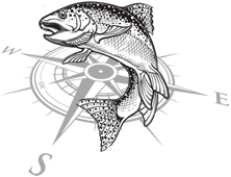The Black Ant

The Black ant is one of the most underrated, under fished and misunderstood creature in the terrestrial family in fly fishing. Most folks will call them Carpenter Ants or just a Black Ant. They are almost everywhere you fly fish. One Queen can have as many as 2000 worker ants per nest. Many nests have sub-nests that may share the same queen or break off with a new queen. Carpenter Ants or Black Ants can be found in dry wooden logs or underground. The Black Ant is a terrestrial in that it is not water born but can live quite close to water.
One nest of ants can travel great distances searching for food and materials for feeding and building up the next nest. When roaming away from their nest you can find these guys almost anywhere from rocks, bushes and trees to sand dunes tops of mountains and of course in your campground. What makes the Black Ant important to the fly angler is wind. Wind will most often blow these ants into water like a lake, stream or river. At this point they are now trout food.
A great example of this is Silver Creek Idaho. Silver creek is known as one of America’s best Spring Creeks. What you can count on at Silver Creek is lots of willows, wind and of course Black Ants. This combination anywhere will create a meal for trout not feeding on a hatch. The clue is you may be on a stretch of river or stream during a time when there is no active hatch going on, but you see sporadic trout rise from time to time for no apparent reason. You see absolutely no aquatic insects on the surface and no signs of a hatch but there is a rise here and there.
More often that not these trout are picking off a lone ant here and there. One deadly way to fish an ant is to fish it soft hackle style on the drift. Try and get yourself upstream and cast your ant directly if front of you, then allow the current to present your ant on the swing. The tension or drag of your fly line will help keep your ant up near the surface and it will allow you to work the whole river. If you are getting strikes but begin to miss these strikes, then go to a slip strike with your fly line. The next time fishing is slow, and you see an odd rise here and there, try floating an ant over those pesky trout.

